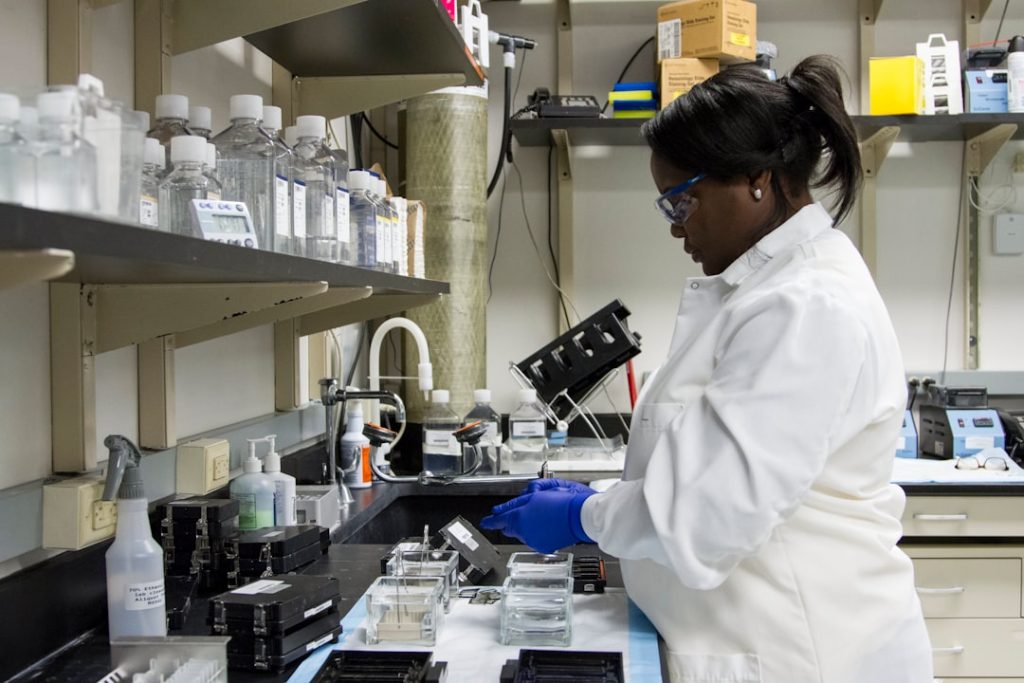Coturnix quail breeding genetics is a fascinating and complex field that involves the study and manipulation of genetic traits in these small game birds. Breeding quail for specific traits has been a practice for centuries, and with the advancement of modern genetics, breeders now have a deeper understanding of the underlying genetic mechanisms that govern these traits. By carefully selecting breeding stock and employing strategic breeding techniques, breeders can work towards producing quail with desired characteristics such as size, color, egg production, and temperament. In this article, we will delve into the world of Coturnix quail breeding genetics, exploring the intricacies of their genetic makeup, the selection of breeding stock, breeding strategies, managing genetic diversity, potential genetic disorders, and future directions in the field.
Table of Contents
- 1 Understanding the Genetics of Coturnix Quail
- 2 Selecting Breeding Stock for Desired Traits
- 3 Breeding Strategies for Coturnix Quail Genetics
- 4 Managing Genetic Diversity in Coturnix Quail Breeding
- 5 Potential Genetic Disorders in Coturnix Quail Breeding
- 6 Conclusion and Future Directions in Coturnix Quail Breeding Genetics
- 7 FAQs
Key Takeaways
- Coturnix quail breeding genetics involves understanding and manipulating the genetic traits of these birds to achieve desired characteristics.
- Understanding the genetics of coturnix quail is essential for successful breeding and maintaining genetic diversity within the population.
- Selecting breeding stock for desired traits involves careful consideration of genetic makeup and physical characteristics to ensure the desired traits are passed on to offspring.
- Breeding strategies for coturnix quail genetics may include inbreeding, line breeding, or outcrossing to achieve specific genetic goals.
- Managing genetic diversity in coturnix quail breeding is crucial for maintaining a healthy and resilient population and preventing the expression of potential genetic disorders.
Understanding the Genetics of Coturnix Quail
The genetics of Coturnix quail are complex and multifaceted, involving a wide range of traits that are governed by both simple and polygenic inheritance patterns. Traits such as feather color, egg production, size, and temperament are all influenced by the quail’s genetic makeup. Understanding the basic principles of genetics is crucial for breeders looking to manipulate these traits in their quail populations. For example, some traits may be controlled by a single gene with two or more alleles, while others may be influenced by multiple genes interacting with each other. Additionally, sex-linked traits and genetic linkage can also play a role in the inheritance of certain characteristics. By studying the inheritance patterns of specific traits and conducting controlled breeding experiments, breeders can gain valuable insights into the genetic makeup of their quail populations and work towards producing offspring with desired traits.
In addition to understanding the basic principles of genetics, breeders must also be familiar with the specific genetic makeup of their quail populations. This involves conducting genetic analyses to identify the presence of certain alleles or genetic markers associated with desired traits. With advancements in genetic technology, breeders now have access to tools such as DNA sequencing and genotyping, which can provide valuable information about the genetic diversity within their quail populations. By understanding the genetic composition of their quail stock, breeders can make informed decisions about breeding pairings and develop targeted breeding strategies to achieve their desired goals.
Selecting Breeding Stock for Desired Traits
Selecting breeding stock is a critical step in Coturnix quail breeding genetics, as it directly influences the genetic makeup of future generations. When choosing breeding stock, breeders should prioritize individuals that exhibit the desired traits they wish to perpetuate in their quail populations. This may include traits such as size, color, egg production, temperament, and disease resistance. By carefully evaluating the phenotypic characteristics of potential breeding stock, breeders can gain insights into the underlying genetic traits that may be passed on to future generations.
In addition to evaluating phenotypic traits, breeders should also consider the genetic background of potential breeding stock. This involves conducting genetic analyses to identify specific alleles or genetic markers associated with desired traits. By selecting individuals with favorable genetic markers, breeders can increase the likelihood of producing offspring with the desired characteristics. It is also important to consider the genetic diversity within the breeding stock, as maintaining a diverse gene pool can help prevent inbreeding and preserve the overall health and vigor of the quail population.
Furthermore, breeders should also consider the reproductive performance of potential breeding stock, as this can directly impact the success of their breeding program. Individuals with high egg production, fertility, and hatchability should be prioritized to ensure the continued success of the breeding program. By carefully selecting breeding stock based on both phenotypic and genetic characteristics, breeders can lay the foundation for producing quail with desired traits in future generations.
Breeding Strategies for Coturnix Quail Genetics
Breeding strategies play a crucial role in manipulating the genetic traits of Coturnix quail populations. By employing specific breeding techniques, breeders can work towards producing offspring with desired characteristics while maintaining genetic diversity within the population. One common breeding strategy is selective breeding, which involves choosing individuals with specific traits to serve as parents for the next generation. This approach allows breeders to perpetuate desirable traits while gradually improving the overall quality of the quail population.
Another important breeding strategy is line breeding, which involves mating closely related individuals to reinforce specific traits within a quail population. While line breeding can be effective in fixing desired traits, it also carries the risk of increasing the prevalence of deleterious alleles and genetic disorders. To mitigate this risk, breeders should carefully monitor the health and vigor of line-bred populations and introduce new genetic material when necessary to maintain genetic diversity.
Additionally, breeders may also employ outcrossing as a breeding strategy to introduce new genetic material into their quail populations. By mating individuals from different genetic backgrounds, breeders can increase genetic diversity and introduce novel traits into their quail populations. However, it is important to carefully select outcrossing partners to ensure compatibility and avoid introducing undesirable traits into the population.
Furthermore, breeders may also utilize techniques such as artificial insemination and embryo transfer to manipulate the genetic makeup of their quail populations. These advanced reproductive technologies allow breeders to control parentage and introduce specific genetic material into their breeding programs. By employing a combination of selective breeding, line breeding, outcrossing, and advanced reproductive technologies, breeders can develop comprehensive breeding strategies to achieve their desired genetic outcomes.
Managing Genetic Diversity in Coturnix Quail Breeding
Managing genetic diversity is a critical aspect of Coturnix quail breeding genetics, as it directly impacts the overall health and vigor of quail populations. Genetic diversity refers to the variety of different alleles and genetic markers present within a population, which is essential for maintaining adaptability and resilience to environmental changes and disease pressures. To manage genetic diversity effectively, breeders should prioritize maintaining a diverse gene pool within their quail populations.
One approach to managing genetic diversity is through careful selection of breeding stock from diverse genetic backgrounds. By incorporating individuals from different lineages and populations into breeding programs, breeders can prevent inbreeding and maintain a healthy level of genetic diversity within their quail populations. Additionally, breeders should regularly assess the genetic composition of their populations through genetic analyses to monitor changes in allele frequencies and identify potential areas for improvement.
Furthermore, implementing structured breeding programs that prioritize genetic diversity can help prevent the loss of rare or unique alleles within quail populations. By strategically selecting breeding pairs and introducing new genetic material through outcrossing or other breeding techniques, breeders can ensure that their quail populations remain genetically diverse and resilient to environmental challenges.
In addition to managing genetic diversity within individual populations, breeders should also consider collaborating with other breeders and conservation organizations to exchange genetic material and promote genetic diversity at a broader scale. By participating in cooperative breeding programs and sharing genetic resources, breeders can contribute to the preservation of diverse quail populations and work towards maintaining healthy and sustainable genetic diversity within the species.
Potential Genetic Disorders in Coturnix Quail Breeding

While selective breeding and manipulation of genetic traits can lead to desirable outcomes in Coturnix quail populations, it also carries the risk of inadvertently perpetuating deleterious alleles and genetic disorders. Genetic disorders in quail can manifest as a wide range of health issues, including developmental abnormalities, reproductive disorders, immune system deficiencies, and metabolic disorders. These disorders can have detrimental effects on the overall health and productivity of quail populations if not carefully managed by breeders.
One common genetic disorder in quail is Marek’s disease, a viral infection that affects the nervous system and immune function of affected individuals. Marek’s disease is caused by a herpesvirus and can lead to paralysis, tumors, and increased susceptibility to secondary infections. Breeders should be vigilant in monitoring for signs of Marek’s disease within their quail populations and take proactive measures to prevent its spread through biosecurity protocols and vaccination programs.
Another potential genetic disorder in quail is splay leg syndrome, a condition characterized by splayed or paralyzed legs in affected chicks. Splay leg syndrome can be caused by genetic factors or environmental stressors during incubation and early development. Breeders should carefully monitor incubation conditions and chick rearing practices to minimize the risk of splay leg syndrome in their quail populations.
Additionally, metabolic disorders such as fatty liver syndrome and ascites can also occur in quail populations as a result of genetic predisposition or environmental factors such as high-energy diets or poor ventilation. Breeders should implement management practices that promote optimal nutrition and environmental conditions to reduce the risk of metabolic disorders in their quail populations.
To mitigate the risk of genetic disorders in quail populations, breeders should prioritize regular health screenings, genetic testing, and careful selection of breeding stock to avoid perpetuating deleterious alleles. By maintaining strict biosecurity measures and implementing proactive health management practices, breeders can minimize the impact of genetic disorders on their quail populations and promote overall health and productivity.
Conclusion and Future Directions in Coturnix Quail Breeding Genetics
In conclusion, Coturnix quail breeding genetics is a complex and dynamic field that offers endless opportunities for breeders to manipulate genetic traits and produce offspring with desired characteristics. By understanding the basic principles of genetics, selecting breeding stock for desired traits, employing strategic breeding strategies, managing genetic diversity, and mitigating potential genetic disorders, breeders can work towards developing healthy and resilient quail populations.
Looking ahead, future directions in Coturnix quail breeding genetics may involve advancements in genomic technologies that allow for more precise manipulation of specific genes associated with desired traits. Additionally, there is growing interest in conservation efforts aimed at preserving rare or endangered quail populations through targeted breeding programs that prioritize genetic diversity.
As our understanding of Coturnix quail genetics continues to evolve, so too will our ability to harness this knowledge for the benefit of quail populations worldwide. By embracing innovative technologies and collaborative efforts aimed at promoting healthy genetic diversity within quail populations, breeders can contribute to the long-term sustainability and resilience of these fascinating game birds for generations to come.
If you’re interested in learning more about the genetics of coturnix quail breeding, you might also want to check out this insightful article on Poultry Wizard about the best kind of coop for chickens. Understanding the genetics of your quail can help you make informed decisions about breeding and selecting the right birds for your coop. Learn more about chicken coop options here.
FAQs
What are coturnix quail?
Coturnix quail, also known as Japanese quail, are a species of Old World quail that are commonly raised for their meat and eggs. They are smaller than other types of quail and are known for their rapid growth and high egg production.
What is quail breeding genetics?
Quail breeding genetics refers to the study and application of genetic principles in the breeding of coturnix quail. This includes selecting and breeding quail with desirable traits such as egg production, meat quality, and disease resistance.
What are some common genetic traits in coturnix quail breeding?
Common genetic traits in coturnix quail breeding include feather color, eggshell color, body size, growth rate, and egg production. Breeders may select for specific traits to improve the overall quality and productivity of their quail stock.
How do breeders select for specific genetic traits in coturnix quail?
Breeders can select for specific genetic traits in coturnix quail through careful observation, record-keeping, and selective breeding. This involves choosing parent quail with desired traits and breeding them to produce offspring with those traits.
What are some challenges in coturnix quail breeding genetics?
Challenges in coturnix quail breeding genetics may include maintaining genetic diversity, avoiding inbreeding, and managing genetic disorders. Breeders must also consider the ethical implications of genetic manipulation and breeding practices.
Meet Walter, the feathered-friend fanatic of Florida! Nestled in the sunshine state, Walter struts through life with his feathered companions, clucking his way to happiness. With a coop that’s fancier than a five-star hotel, he’s the Don Juan of the chicken world. When he’s not teaching his hens to do the cha-cha, you’ll find him in a heated debate with his prized rooster, Sir Clucks-a-Lot. Walter’s poultry passion is no yolk; he’s the sunny-side-up guy you never knew you needed in your flock of friends!







